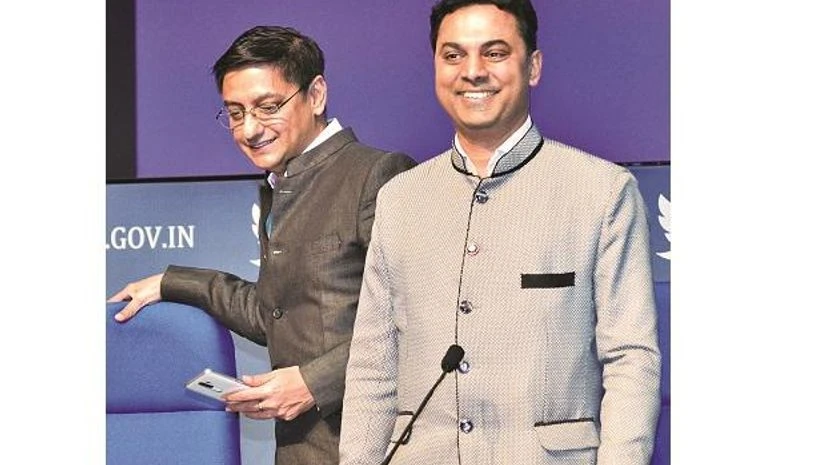Chief Economic Adviser K V Subramanian on Friday said India's GDP is expected to grow at 6-6.5 per cent next fiscal as the economic slowdown has bottomed out.
As per the first advance estimates released by the National Statistical Organisation (NSO), the country's economic growth is likely to hit an 11-year low of 5 per cent in the current fiscal ending March 2020.
The Economic Survey 2019-20, prepared by a team lead by Subramanian, has projected the GDP to expand in the range of 6-6.5 per cent during 2020-21.
"If you look at the business cycle phenomena in India, typically if you look at the peaks and troughs and co-relate it with what has happened, it seems like we have hit the trough therefore there should be uptick in growth. That is what we are Budgeting," he said in a media briefing post the Economic Survey.
Amidst a weak environment for global manufacturing, trade and demand, the Indian economy slowed down with GDP growth moderating to 4.8 per cent in the first half of 2019-20, lower than 6.2 per cent in H2 of 2018-19.
Also Read
Based on NSO's first advance estimates of GDP growth for 2019-20 at 5 per cent, an uptick in GDP growth is expected in the second half of the fiscal, it said.
According to it, the uptick in second half of 2019-20 would be mainly due to ten positive factors like picking up of Nifty India Consumption Index for the first time this year, an upbeat secondary market, higher FDI flows, build-up of demand pressure, positive outlook for rural consumption, rebound of industrial activity, steady improvement in manufacturing, growth in merchandise exports, higher build-up of foreign exchange reserves and positive growth rate of GST revenue collection.
When asked if there is any change in meeting USD 5 trillion target by 2024-25, Subramanian said," To best of my knowledge, there is no change in deadline."
On the impact Coronavirus outbreak on the economy, he said, "I am not a doctor, (but) it may be very marginal."
Subramanian said by focusing on labour intensive sector, India can create 4 crore jobs by 2025 and 8 crore jobs by 2030.
The CEA said that the Indian banking sector needs to scale up and become proportional to the size of the economy.
He said exponential rise in India's GDP and GDP per capita post liberalisation coincides with wealth generation in the stock market.
Subramanian said India should strengthen the invisible hand of markets together with the hand of trust that can support markets, in line with the economic model advocated in our traditional thinking.
He said a 10 per cent increase in registration of new firms in a district yields a 1.8 per cent increase in district level GDP.
Subramanian pointed out that frequent and unpredictable imposition of blanket stock limits on commodities under anachronistic ECA neither brings down prices nor reduces price volatility.
"Imposing price limits on drugs does not have much impact in controlling the prices of drugs, especially the expensive formulations or those that are sold via hospitals, opposite to what is intended," he observed.
The survey also emphasised that merger of public sector banks may increase the financial strength of the merged entities, lower the risk aversion and result in lowering of lending rates.
Further, as the implementation of GST further settles down, the increased unification of the domestic market may reduce business costs and facilitate fresh investment.
Reforms in land and labour market may further reduce business costs, said the survey, presented a day before Sitharaman's Union Budget 2020-21.
Subramanian said the Economic Survey for 2019-20 presents a synthesis of the old and the new signified by the lavender of the new "Rs 100 note" coming together with the one of the older currency notes - that of Rs 100.
The Survey also integrates our old and rich tradition with contemporary evidence that ethical wealth creation is a noble human pursuit, he added.

)
